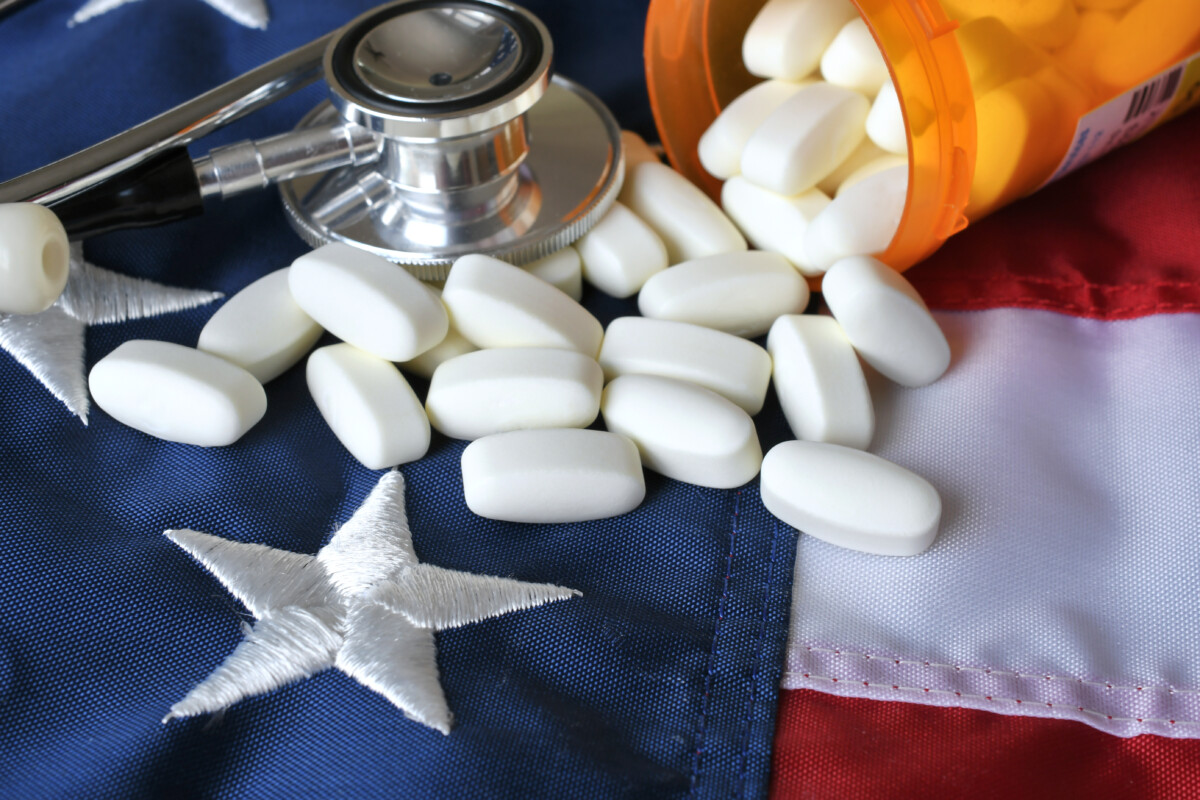Understanding Medicare Tier 5 Drugs Cost: A Complete Guide
Are you feeling overwhelmed by the complex world of Medicare prescription costs, especially when it comes to Medicare tier 5 drugs cost? You’re not alone. Understanding how these high-cost medications are covered can be confusing, but fear not – we’re here to break it down for you. In this blog post, we’ll explore everything you need to know about tier 5 drug pricing and how they fit into your Medicare specialty drug costs coverage. So grab a cup of coffee, and let’s dive in!
Introduction to Tier 5 Drugs and Medicare Coverage
Medicare is a program that provides coverage for people over the age of 65, as well as those with disabilities. This program is divided into different parts, including Part D, which covers prescription drugs. However, not all are covered under Medicare Part D. The drugs that are covered fall into different tiers, each with its own cost-sharing structure.
Tier 5 drugs are the highest-cost category of prescription drugs under Medicare Part D. They typically include specialty medications such as biologics and other high-priced treatments for complex conditions like cancer, multiple sclerosis, and hepatitis C. These types of medications often require special handling & administration and can be quite expensive.
Due to their high costs, Tier 5 drugs have a significant impact on both beneficiaries’ out-of-pocket expenses and the overall healthcare spending in the United States. As these medications become more prevalent in treating chronic illnesses, it’s crucial to understand how they are covered under Medicare.
Coverage for Tier 5 Drugs Under Medicare
Under Medicare Part D, drug plans must cover at least two medications from each therapeutic class or category of drugs listed on their formulary (a list of covered drugs). This includes at least one generic option if available. However, there is no requirement for plans to cover every medication within a therapeutic class.
Unlike lower-tiered drugs, where cost-sharing may differ slightly between plans but generally remains consistent across them all, Tier 5 drug coverage can vary widely among plans. Some plans may offer full coverage of these medications, while others may require coinsurance or copayments ranging from 25% to even up to 50% of the medication’s total cost.
What are Tier 5 Drugs?
Tier 5 drugs, also known as ‘specialty drugs,’ are a specific category of prescription medications that can be quite costly and may require special handling and administration. These drugs are used to treat complex or rare medical conditions such as multiple sclerosis, cancer, rheumatoid arthritis, or hepatitis C.
Unlike other tiers in the Medicare drug coverage system, Tier 5 drugs are not classified based on their cost. Instead, they are designated by the Centers for Medicare & Medicaid Services (CMS) as medications that have unique characteristics that set them apart from other prescription drugs. This includes factors such as limited distribution networks or specialized storage requirements.
Due to their high cost and unique characteristics, Tier 5 drugs often require prior authorization from Medicare before they can be covered under Part D. This means that your doctor will need to provide evidence that the medication is medically necessary for your condition before it can be approved for coverage.
In addition to prior authorization, most Tier 5 drugs also have higher cost-sharing requirements compared to other tiers. This means that you will likely have to pay more out-of-pocket for these medications than you would for lower-tier prescriptions.
Furthermore, many insurance plans may also have quantity limits on specialty drugs in order to prevent overuse and control costs. This means that there may be a limit on how much of a certain medication you can receive within a specified time period.
It’s important to note that not all specialty medications fall under Tier 5. Some plans may classify them under different tiers depending on their cost and availability. It’s always best to check with your specific plan to determine which tier your medication falls under and what coverage options are available.
One way to potentially lower the cost of Tier 5 drugs is through manufacturer assistance programs or patient assistance programs (PAPs). These programs provide assistance or free medication directly from the pharmaceutical company for eligible individuals who cannot afford their prescribed specialty drug treatment.
Tier 5 drugs are a unique category of prescription medications that have high costs and specialized characteristics. They often require prior authorization, have higher cost-sharing requirements, and may have quantity limits. However, with the help of manufacturer assistance programs and patient assistance programs, individuals may be able to access these vital medications at a more affordable cost.
How Much Do Tier 5 Drugs Cost?
Medicare coverage for prescription drugs can be a topic when it comes to understanding the different tiers of drug pricing. In this section, we will focus on Tier 5 drugs and how their cost is determined under Medicare.
Tier 5 drugs are considered specialty medications and are typically the most expensive category of drugs covered by Medicare. These medications often require special handling, administration, or monitoring and may be used to treat complex or chronic conditions such as cancer, HIV/AIDS, multiple sclerosis, or rheumatoid arthritis.
The cost of Tier 5 drugs can vary greatly depending on several factors. One major factor is whether you have prescription drug coverage through original Medicare (Part A and Part B) or through a Medicare Part D plan. If you have Medicare, your prescription drug costs will be covered under Part B if the medication is administered in a doctor’s office or outpatient setting. However, if you have a Part D plan, your costs will depend on which tier the drug falls into within your specific plan’s formulary.
Another factor that can affect the cost of Tier 5 drugs is whether there is a generic version available. Generic versions of these medications may be significantly less expensive than their brand-name counterparts. However, due to their specialized nature and often high development costs, many Tier 5 drugs do not yet have generic versions available.
In addition to these factors, your out-of-pocket costs for Tier 5 drugs will also depend on whether you are in the initial coverage phase (where you pay a portion of the cost) or in the catastrophic coverage phase (where you pay significantly less). Once you reach $6,550 in out-of-pocket spending for covered medications in one year with a Part D plan (or $9,470 with original Medicare), you enter into catastrophic coverage where your costs decrease significantly.
It’s important to note that there may also be additional costs associated with Tier 5 drugs, such as coinsurance, copayments, and deductibles. Therefore, it’s crucial to carefully review your plan’s formulary and understand your specific coverage before starting a Tier 5 medication.
Tier 5 drugs are the most expensive category of medications covered by Medicare due to their specialized nature and often high development costs. The cost for these drugs can vary greatly depending on factors such as your prescription drug coverage type, availability of generic versions, and which phase you are in for out-of-pocket spending. It’s important to carefully review your plan’s formulary and discuss any concerns with your provider to ensure you have the best understanding of how much Tier 5 drugs may cost you under Medicare.
Understanding Medicare Part D Coverage
Medicare Part D is a drug program offered by the government for individuals who are eligible for Medicare. This program helps cover the costs of drugs, including both brand-name and generic medications. Understanding how Medicare Part D works can be confusing, especially when it comes to tier drugs. In this section, we will discuss the basics of Medicare Part D coverage and how it relates to tiered drug pricing.
So why are these tiers important? Each tier has its own cost-sharing structure, meaning you will pay a different amount depending on which tier your prescribed medication falls under. Generally speaking, lower-tiered drugs will have lower out-of-pocket costs compared to higher-tiered ones.
It’s also essential to note that each insurance provider offering Medicare Part D plans may have different formularies and pricing structures for their tiers. Therefore, it is crucial to review your plan’s specific formulary before enrolling in a specific Medicare Part D plan.
One common concern about tiered drug pricing is that some may worry they won’t be able to afford their necessary medication if it falls under a higher-priced tier. However, there are measures in place to protect individuals from facing exorbitant out-of-pocket costs for their prescriptions through programs like catastrophic coverage and the Low-Income Subsidy (LIS) program.
Catastrophic coverage limits what beneficiaries must pay out-of-pocket once they reach a certain threshold in total drug expenses. This provides peace of mind for those who require high-cost medications. On the other hand, the LIS program helps individuals with limited income & resources pay for their prescription drugs under Medicare Part D.
Understanding how Medicare Part D coverage works is crucial in navigating tiered drug pricing. Knowing which tiers your needed medications fall under can help you make decisions when choosing a plan that best suits your needs and budget. Additionally, taking advantage of programs like catastrophic coverage and the LIS program can provide financial assistance for prescription drugs if needed.

How Can NewMedicare Help You with Tier 5 Drug Costs?
Medicare Part D offers drug coverage to individuals who are enrolled in Medicare. However, not all medications are covered under this plan. Some drugs fall into different categories known as tiers, with each tier having a cost-sharing structure.
Tier 5 drugs are typically the most expensive category of drugs and often include specialty or high-cost medications that may not have generic alternatives. These drugs can be a burden for many Medicare beneficiaries, especially those on fixed incomes.
Fortunately, NewMedicare is here to help alleviate the burden of Tier 5 drug costs. NewMedicare is a program designed to assist qualifying individuals with lower income & limited resources in paying for their prescription medications. It is also known as the Extra Help program.
The Extra Help program provides assistance by subsidizing some or all of the out-of-pocket expenses associated with Tier 5 drugs for eligible individuals. This includes premiums, deductibles, and coinsurance costs. In addition to these savings, beneficiaries enrolled in the program will also have a lower copay amount when purchasing their medications.
To qualify for this assistance through NewMedicare’s Extra Help program, an individual must meet certain criteria based on their income and assets. In 2021, an individual’s annual income must be below $19,320, and their assets must be less than $14,790 to qualify for full Extra Help benefits.
For couples living together in 2021, their combined annual income must be below $26,130 with assets less than $29,520 to qualify for full Extra Help benefits.
It’s important to note that even if your income or assets exceed these limits slightly, but you still struggle with paying for your medications every month, you may still qualify for partial assistance through the Extra Help program.
NewMedicare has made it easier than ever to apply for these benefits online through their website or over the phone by calling Social Security at 1-800-772-1213. The process is simple, & you will receive a response within a few weeks.
The Extra Help program offered by NewMedicare can significantly reduce the financial burden of Tier 5 drug costs for qualifying individuals. If you or someone you know could benefit from this assistance, we encourage you to apply and see if you are eligible for these valuable benefits.
Tips for Managing Tier 5 Drug Costs
When it comes to understanding and managing tier 5 drug costs, there are a few key tips that can help you save money while still getting the medications you need. Here are some strategies to consider:
1. Talk to your doctor: the doctor is your best advocate when it comes to managing your medication costs. They can work with you to find alternative medications or dosage adjustments that may be covered under a lower tier.
2. Explore generic options: Generic drugs often have the same active ingredients as medications but at a lower cost. Ask your doctor if there is a version available for your prescribed medication.
3. Consider mail-order pharmacies: Many Medicare Part D plans offer discounts for using mail-order pharmacies, which can be especially helpful for expensive tier-5 drugs. This option also saves you time and hassle by having your medications delivered directly to your home.
4. Look into patient assistance programs: Some companies offer programs that provide free medications for eligible individuals who cannot afford their prescriptions.
5. Review your plan’s formulary: Each Part D plan has its own formulary, which is a list of covered drugs organized by tiers. Make sure to review this list and understand where the drugs prescribed by your doctor fall on the formulary before enrolling in a plan.
6. Consider switching plans during open enrollment: If you find that your current Medicare Part D plan does not cover all of your necessary tier 5 drugs or has high out-of-pocket costs, consider switching plans during the open period (October 15th-December 7th). You may be able to find a different plan with better coverage and cost-saving options.
7. Utilize drug discount cards: There are various drug discount cards available through organizations such as AARP or AAA that can help reduce the cost of tier 5 drugs even further, especially if they are not covered by insurance.
8. Keep track of your medication usage: It’s important to be aware of how much medication you have left and when you will need a refill. This can help prevent overpaying for medications or running out before your next prescription is due.
Conclusion
It cannot be emphasized enough how crucial it is to fully understand your Medicare coverage for tier 5 drugs. With the rising costs of prescription medications and the complexity of Medicare coverage, being informed about your options can save you both time and money.
Firstly, understanding the different tiers of drugs that are covered by Medicare can help you make more decisions when it comes to choosing a prescription medication. Tier 5 drugs are typically specialty drugs or biologics that treat complex or rare conditions. These drugs tend to have high costs and may require prior from your doctor before they can be covered by Medicare. By knowing which tier a drug falls under, you can better prepare for potential out-of-pocket expenses & discuss options with your provider.
Furthermore, having a thorough understanding of your Medicare coverage for tier 5 drugs allows you to plan ahead and budget accordingly. As mentioned earlier, these medications often come with significant price tags, and not being prepared for these expenses can lead to financial strain. By reviewing your coverage beforehand and exploring any potential cost-saving options, such as manufacturer assistance programs or generic alternatives, you can avoid unexpected bills and potentially save money in the long run.
Moreover, understanding your Medicare coverage for tier 5 drugs also means having knowledge about any restrictions or limitations that may apply. For instance, some medications may only be covered if they are administered in a hospital setting or if certain criteria are met. By being aware of these details, you can work with your team to ensure that you receive appropriate care without any unnecessary delays or denials from Medicare.
Knowing the ins & outs of your Medicare coverage for tier 5 drugs empowers you as a patient to advocate for yourself during medical appointments. With an increasing number of people opting for Newmedicare, it’s clear that it is a preferred choice when it comes to healthcare coverage. You can ask informed questions about treatment options and have open discussions with your doctor about any concerns regarding medication costs.
Being well-informed about your Medicare coverage for tier 5 drugs can make a significant difference in managing your healthcare expenses and receiving the best possible care. By staying educated and proactive, you can have peace of mind knowing that you are making the most out of your Medicare benefits.
If you’re over the age of 65 years and want to learn more about Medicare Plan, please visit Newmedicare.






